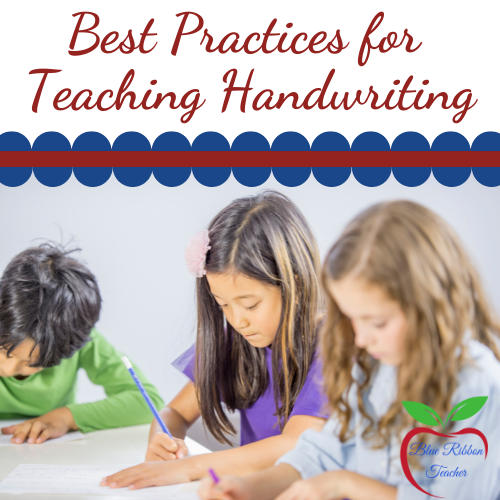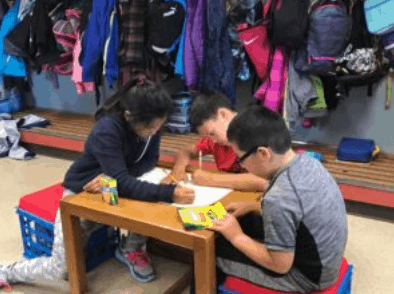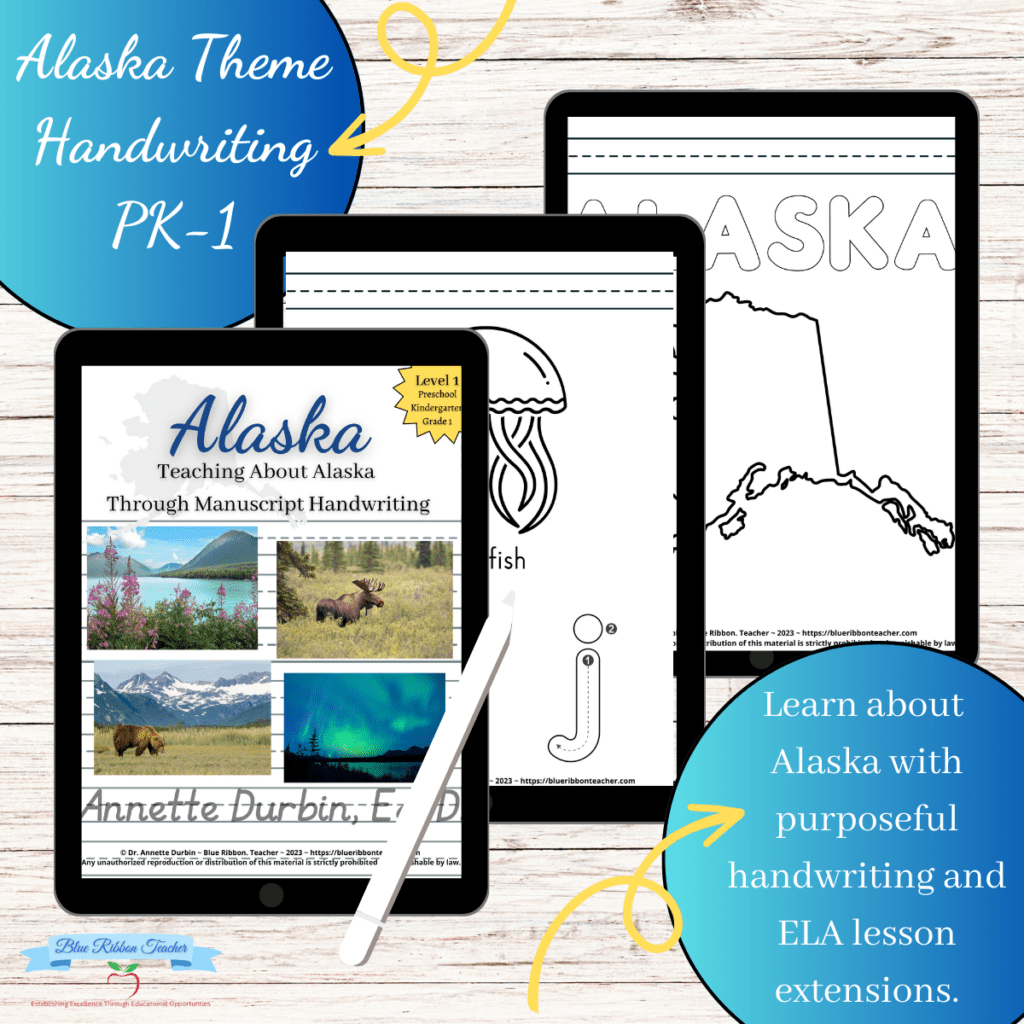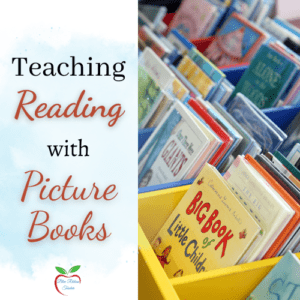Best Practices for Handwriting Instruction
What are the best practices for handwriting instruction? What do you mean? Isn’t handwriting instruction teaching children how to form letters? When done properly, handwriting instruction is so much more than just forming letters. In this article, we are going to discuss best practices for handwriting instruction and their impact on literacy.
Before we delve into best practices, let’s review my last article about teaching handwriting. In this article, I focus on why it is important to teach handwriting. I discuss how handwriting has a direct impact on developing literacy foundational skills, cognitive development, and fostering creativity. I also discuss handwriting in the twenty-first-century classroom, examine the four language domains, and how handwriting is embedded in each domain. If you missed this article, go check it out and then come back here to learn about best practices for handwriting instruction.

Alright, now that we have an understanding of why teaching handwriting is important, we are going to delve into best practices for handwriting instruction.
As you remember from the last article, 90% of educators feel teaching handwriting is important; however, only 12% said they received adequate training in teaching handwriting. This means 88% of teachers don’t feel they are effective at teaching handwriting.
It is my goal with this article to help all teachers feel more confident about teaching handwriting by sharing strategies, tips, and resources to support handwriting instruction. By the end of this article, you will learn about best practices for handwriting instruction and have a plan ready to implement.
Let’s get started!
Handwriting Instruction Stages and Strategies
Teaching handwriting to children requires a systematic approach that gradually introduces and reinforces letter formation. I am going to share some strategies and tips that can be effective in teaching handwriting at each developmental level.
1. Handwriting Instruction for Pre-literate Stage (birth to age 2):
Children at this stage are learning information every single minute. They are constantly watching what people are doing and analyzing how they interact with each other and him/herself. The children are making sense of sounds, actions, reactions, gestures, facial expressions, language tone, and more. Children are learning how to communicate by observing their environment. Children are developing their language skills by listening and practicing their skills through speaking. These two modes of communication are the first two language skills developed.

Therefore, in this stage, start with pre-writing activities to build fine motor skills. Before children learn to form letters, they should engage in activities that strengthen their hand muscles and eye-hand coordination.
Activities can include playing with playdough, tracing shapes and patterns, using manipulatives, and scribbling with crayons. Any task to encourage the child to use his/her fingers and place an item in a specific place is beneficial in this stage.
Tips for children at this stage:
I cannot stress enough the importance of spending quality time with children. What can you do: engage with the child, talk with them, read books together, share stories, go on walks and talk about what you see, hear, and feel (think 5 senses), play with them, make up stories, and sing songs.
2. Handwriting Instruction Emergence Stage (ages 3-4):
These children are continuing to observe their environment and develop literacy skills by listening and speaking. Children begin to ask more questions as they develop vocabulary, experiment with cause and effect, and define the purpose of things in their environment. Children learn how to interact with others and model what their siblings and adults are doing every day. If children have been immersed in reading during the pre-literate stage, they begin to practice reading using their favorite books. Since they see other writing, they will also begin to use writing utensils and mimic these new behaviors. You will notice the child pick up a pencil or crayon and start “writing” (scribbling) on paper or any other nearby surface. Children will start writing random letters and drawing pictures each intentional mark to share a message and tell a story.

…..
Beautifully written
 by Mindful Moments Child Enrichment.
by Mindful Moments Child Enrichment.Therefore, encourage children to draw lines, circles, and arcs to develop letter strokes. While children have thoughts to share, encourage them to add details to the picture to develop writing skills focusing on content development. Allow the child to determine what he/she would like to share, write, and draw.
Tips for children at this stage:
Continue reading books and allow the child to tell the story. Provide age-appropriate learning experiences for children to learn about their environment. Provide fine motor and gross motor experiences for children to learn about “their space”. Share creative ways for children to “write” with markers and paintbrushes. Practice fine motor skills by manipulating play dough, picking up Cheerios then putting them in a bowl, and finger painting.
3. Handwriting Instruction for Transitional Stage (ages 4-7):
When a solid literate foundation has been the norm, the transition to using symbols to represent sounds, words, and sentences, and communicating in writing and reading will prosper. Children begin connecting meaning with written letters, pictures, and words noting how these symbols communicate thoughts. Children learn how to form letters by thinking about shape, size, space, and slant. The importance of legibility is noticed. Children learn the way letters are formed with lines, curves, circles, and arcs. They begin to match a symbol to a letter and then a sound ending with developing words.

Therefore, in this stage, children begin to learn that sounds are represented by symbols (letters) and words are a series of sounds (letters) put together. Children begin to connect meaning with sounds and letters. When teaching letters, introduce them gradually. Since children are still developing fine motor skills, begin by teaching uppercase letters, as they are easier to recognize and form. When teaching the letter with specific strokes, be purposeful with instruction including language and sound. Teach proper letter formation using multi-sensory strategies such as visual aids, letter cards, worksheets, shaving cream, air writing, finger paint, salt, singing songs,
body modeling, and playing letter games. There are many ways to practice letter formation. Once children are comfortable with uppercase letters, fine motor skills are increasing, and students begin to engage more with written text, then it is time to introduce lowercase letters.
Tips for children at this stage:
It is important to continue engaging in conversations to develop listening and speaking skills, and continue modeling to lay a foundation for developing reading and writing skills. Children should also continue practicing letter writing in a variety of ways while saying the letter sounds. This strategy supports multi-sensory learning and develops pathways to connect symbols with sounds.
Remember, right-handed students learn to put a finger space after each word; whereas, for left-handed children, a popsicle stick created as a “spaceman” or paperclip is a great tool to support separating words. When teaching letters it is important to start with capital letters, since these letters are made with straight lines and all the same size. When linking handwriting to literacy, it is important to say the letter sound(s) when writing the letters. Precise techniques for good, easy handwriting and accurate pronunciation are taught from the beginning (Spalding, p. 4).
4. Handwriting Instruction for Fluency Stage (age 5-8):
As children continue to develop their literacy skills in listening, speaking, reading, and writing his/her writing and reading fluency increases. Effective handwriting instruction is multi-sensory. “The kinesthetic sense combines with hearing and then with seeing and reading the phonogram the child has just written” (Spalding, p. 11).
Muscle memory begins to take over when forming letters allowing the child to write his/her thoughts down with ease. Additionally, since proper pencil grip and proper letter formation have been practiced children experience less hand fatigue, and fluency increases.

Therefore, in this stage, provide guided practice. Offer structured and purposeful opportunities for children to practice forming letters and words. Provide models for them to trace and gradually reduce the amount of guidance as their skills improve.
Children should begin developing letters that are legible. Practice correct letter formation with shape, slant, space, and size are paramount. This develops consistency and muscle memory. Remember, support left-handers with a tool – spaceman tool, paperclips – to help with word spacing.
Tips for children at this stage:
As you can see, during each of the four stages it is paramount to make handwriting fun and engaging. Find creative ways for children to practice strokes. Incorporate games, puzzles, and interactive activities into handwriting practice to make it enjoyable for children. This can include using colorful writing tools, playing letter recognition games, or writing letters in shaving cream or sand. Practicing handwriting does not need to be boring. Using multi-sensory activities allows children to have fun, develop fine motor skills, learn foundational literacy skills, and how to express their thoughts.
Strategies to support pencil grip include writing with a short crayon/pencil or pencil grip tools that force the fingers into a three-finger grip. Other strategies to force a proper pencil grip include a sock with finger holes and a rubber band. It is important to “teach” children proper pencil grip and make corrections during this stage since poor grasp impacts legibility, stamina, writer’s cramp, writer’s fatigue, and comfort. Remember, children who struggle with pencil grip is a sign of weak hand muscles. Encourage more fine motor development to strengthen muscles.
Best Practices for Handwriting Practice: Daily Routines and Activities
To reinforce handwriting skills, it’s important to incorporate practice into daily routines and activities. Check out these ideas!
1. Writing notes and messages:
Encourage children to write thank-you notes, birthday cards, or simple messages to family members or friends. This not only provides them with handwriting practice but also promotes the expression of gratitude and social skills.

2. Journaling:
Encourage children to keep a journal where they can write about their daily experiences, thoughts, and emotions. This helps develop their writing fluency and self-expression.
3. Letter and word games:
Play games that involve writing letters or forming words, such as Hangman, Scrabble, or word puzzles. These games make handwriting practice enjoyable and foster vocabulary development.
4. Storytelling and creative writing:
Encourage children to write their own stories or create their own comic strips. This allows them to explore their imagination, develop narrative skills, and practice handwriting simultaneously.
Handwriting Resources: Tools for Parents and Educators
There are various resources and tools available to support handwriting development in children. Some ideas are shared below.
1. Handwriting instruction workbooks:
These workbooks provide structured exercises and practice opportunities for children to improve their handwriting skills. They often include tracing activities, letter formation guides, and writing prompts.

2. Handwriting instruction apps:
There are numerous apps available that offer interactive and engaging handwriting practice. These apps often provide visual and audio guidance and track progress over time.
3. Online handwriting resources:
Many websites offer free printable worksheets and resources for handwriting practice. These resources can be customized to target specific skills, such as letter formation or cursive writing.
4. Occupational therapy services:
If a child is struggling with handwriting, occupational therapy services can provide specialized support and interventions to improve fine motor skills and handwriting abilities.
Take a moment to review this chart focusing on using the correct pencil grip and pencil positions. I often find children are not using the proper grip or position resulting in writing challenges. Teach correct pencil grip and pencil position to support your student’s language skills.
Handwriting Resources
I have created a few handwriting resources to support instruction at each of the four levels. What is unique about these resources? Students learn about Alaska, the 49th state. Check out my TPT store for additional literacy resources.
Related Resources: Best Practices for Handwriting Instruction
How to Support Struggling Writers to Overcome Writer’s Block
How to Teach Writing Through Picture Composition
Overcome the Reading Comprehension Challenge
Final Thoughts: Best Practices for Handwriting Instruction
Remember, when teaching handwriting, it is important to use the best practice strategies and tips shared in this article. Educators don’t often think about best practices for handwriting instruction; however, when following these best practices, your students will learn more with the added bonus of enhancing literacy.






